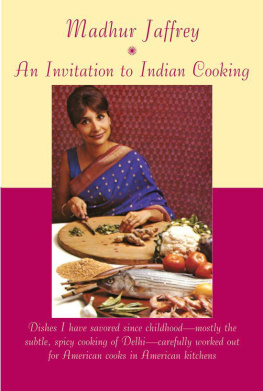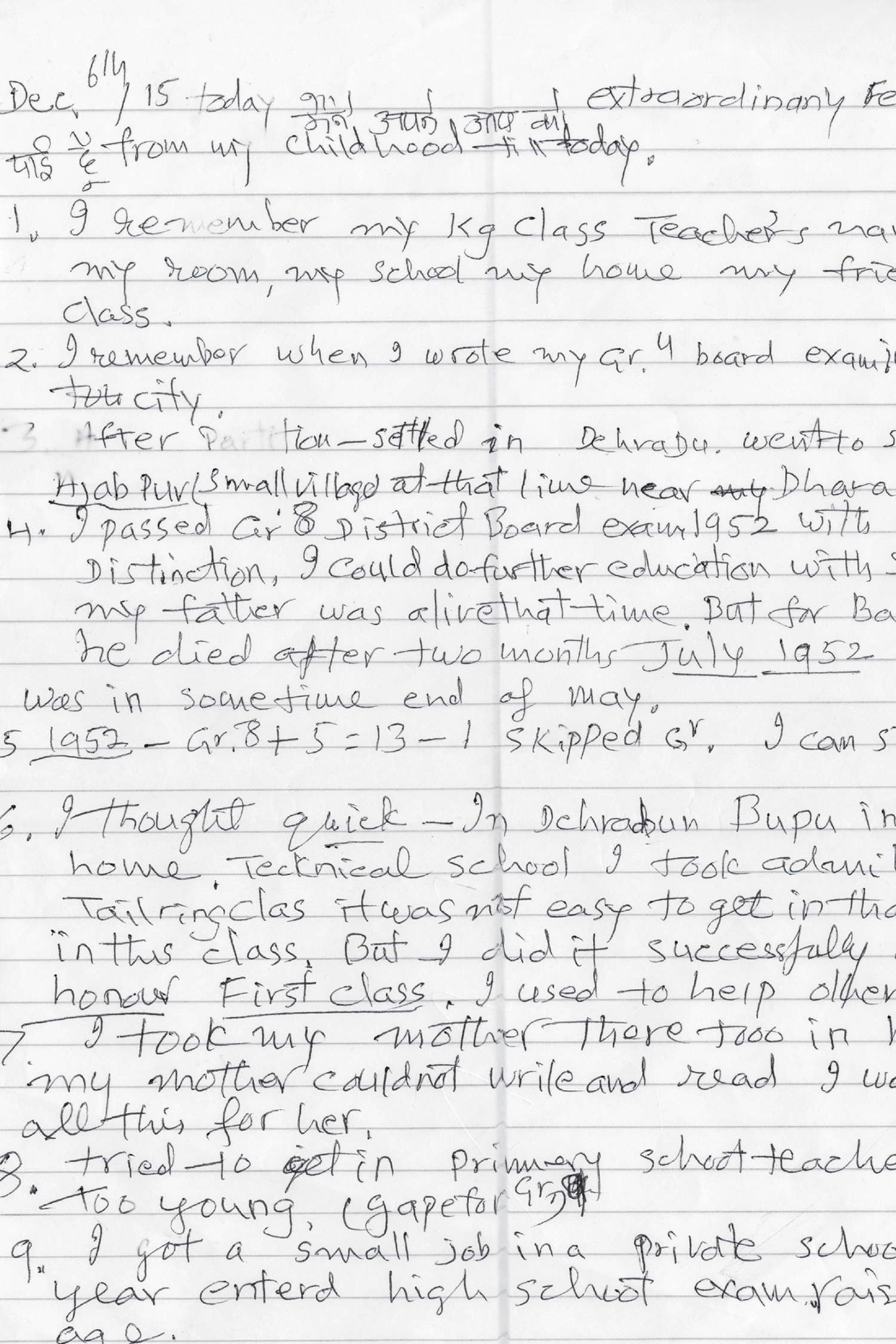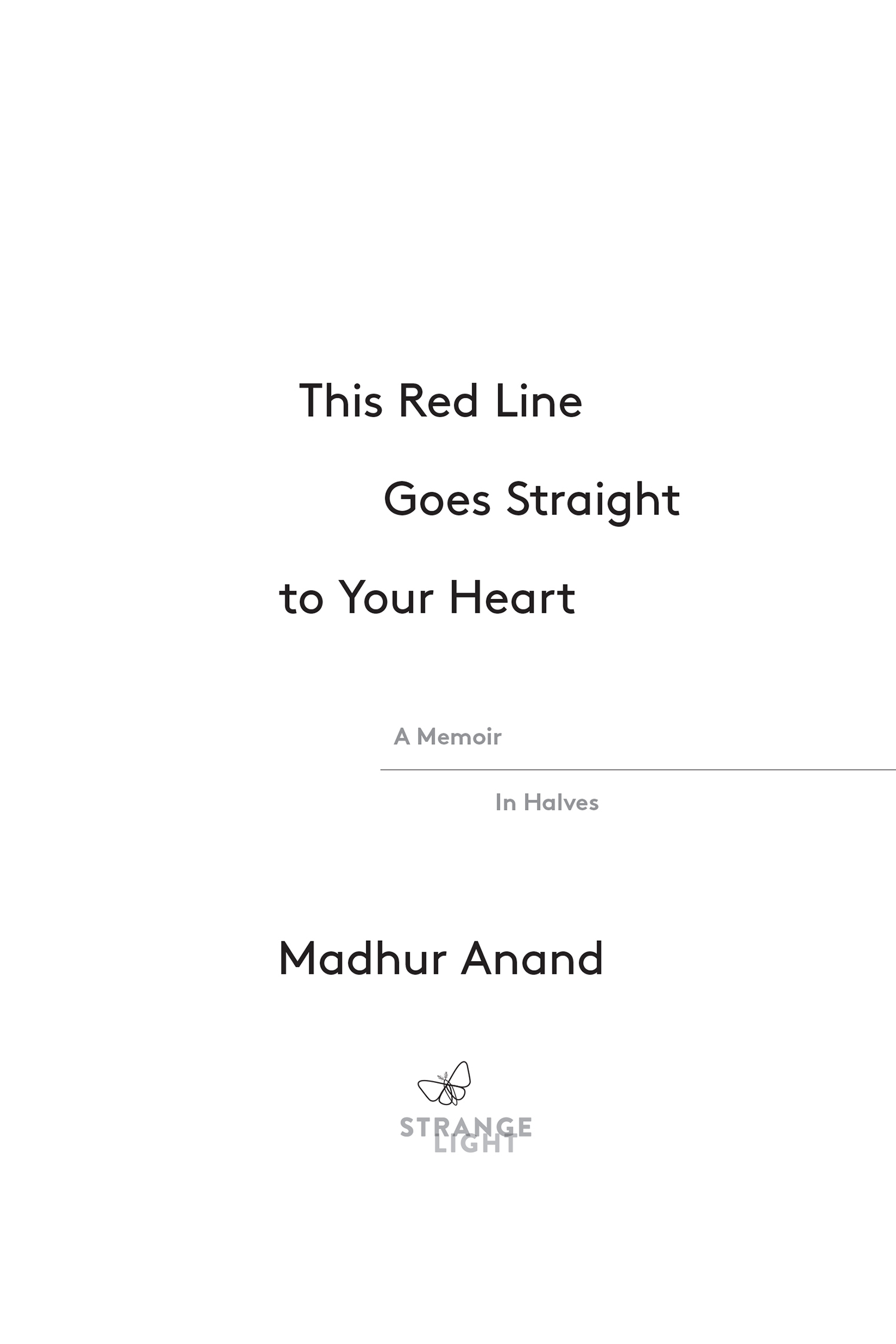Contents
Landmarks
Print Page List
Contents
Advance praise for
THIS RED LINE GOES STRAIGHT TO YOUR HEART
DistinctiveThe different perspectives are truly poetic and at times heartbreaking. Playing with time is so difficult and Im happy to say in This Red Line it soars.
Deepa Mehta, filmmaker
Anand illustrates the unknowability of love and other people and the futility of logic and science when it comes to the human heart. The result is a beautiful experiment that free falls through metaphors and anecdotes, and delivers us truths that are like rare butterflies.
Heather ONeill, author of Lullabies for Little Criminals and The Lonely Hearts Hotel
I loved this book for its lyricism, ideas, brilliant refusal of symmetry. Ive never read anything like it.
Kate Harris, author of Lands of Lost Borders
Wondrously and elegantly written in language that astonishes. This is an important book: an emotional and intellectual tour de force.
Jane Urquhart, author of the The Stone Carvers and The Night Stages
An electrical storm of a book. Sweeping, gorgeous, bold, and piercing. As vivid and uneasy as life itself.
Claudia Dey, author of Heartbreaker and Stunt
More than a memoir, this is a meditation on history, family and identity and the heartbeat of the cosmos itself. This Red Lineis erudite, honest, thought-provoking, and immensely readable. I found it hard to put it down.
Olive Senior, author of The Pain Tree
Madhur Anand shows us how to use science in the service of art, and art as a tool for science, but more than that, she uses the two together to reveal the universals we all suffer by telling us the story of her very particular family.
Lee Smolin, founding faculty member of the Perimeter Institute for Theoretical Physics and author of The Life of the Cosmos
A stunning hybrid of family history, personal narrative, and political archive. This is a book I wish I could give to my great-grandparents. I already know I will reread it to fill my heart and sharpen my senses.
Rudrapriya Rathore, writer and critic
I remember the first time I looked through a kaleidoscope, Madhur Anand writes in this many-sided memoir, which you dont so much read as rotate, entranced by the patterns that change almost from sentence to sentence, each like a mirror. The patterns are infinite. They are also deeply memorable.
Arvind Krishna Mehrotra, author of Selected Poems and Translations/NYRB Poets and History of Indian Literature in English
An epic story set inside the complexities of culture and filled with characters whom you love as if they were your own family. Details of sound and sight, taste and smell rise from the page. A truly wondrous book.
Barb Minett, founder of The Bookshelf
Copyright 2020 by Madhur Anand
First edition published 2020
Strange Light and colophon are registered trademarks of Penguin Random House Canada Limited.
All rights reserved. The use of any part of this publication reproduced, transmitted in any form or by any means, electronic, mechanical, photocopying, recording, or otherwise, or stored in a retrieval system, without the prior written consent of the publisheror, in case of photocopying or other reprographic copying, a licence from the Canadian Copyright Licensing Agencyis an infringement of the copyright law.
Library and Archives Canada Cataloguing in Publication data is available upon request.
ISBN9780771007774
Ebook ISBN9780771007781
Book design by Terri Nimmo
Cover art: courtesy of the Library and Archives,
Natural History Museum, London
Published by Strange Light,
an imprint of Penguin Random House Canada Limited,
a Penguin Random House Company
www.penguinrandomhouse.ca
a_prh_5.5.0_c0_r0
For my children
THE FIRST PARTITION
Aap Beeti vs. Jag Beeti
The story goes more or less like this: A nobleman is out hunting
with his hawk. The hawk gets him a crane, which he throws
into a bag to bring back to his villa to have cooked for his
dinner. The noblemans cook has a friend who, unable to
resist the smell of the cooking bird, begs the cook
to give him one of the cranes legs to eat. When the
nobleman sees the cooked crane with the missing
leg on his plate, he asks the cook about it. The
cook insists that the crane only had one leg
to begin with. The cook tries to prove
his point by taking the nobleman
back to the river where the crane
was hunted. They come upon a
number of cranes in the water,
standing on one leg, asleep.
The cook says, See! They
all have only one leg!
The nobleman yells,
Shoo! and the
cranes put
down
their second legs and fly away. The nobleman scolds the cook, but the cook then asks the nobleman: Why did you not yell Shoo! at the dinner table earlier today? How do you know for sure that the cooked crane would not also reveal its second leg to you then? You see? You have wasted my time, sir. The nobleman accepts the cooks wit in exchange for his forgiveness.
I have never heard of Giovanni Boccaccio, the man who wrote this story, entitled A Witty Answer, which I read in my Radiant Reading book in Dehradun when I was sixteen. It is full of words I did not know: trussed, refusal, obliged, wrath, impudence. The truth is, three of five of these words I still do not know. The story is one of one hundred tales from a book called The Decameron, set in Florence around 1350. It was the time of the Black Death, my daughter tells me. I have a vague idea of where Italy is now, because my daughter took me there when I was already an old woman. It was Venice and she made me taste red wine for the second time in my life and listen to a classical concert of Mozart in a very old church. I listened but I did not like it. I tried to hide that fact from my daughter but she saw me asleep. I said it was from the wine. But she knew I had only had three sips. I still do not know what the Black Death is but it sounds worse than Partition.
Excuse me. Do you want to hear Aap beeti or Jag beeti? My version, or the version written by others?
Everyone Has It
In 1947 a line is drawn across the state of Punjab. The man who draws it imagines an organic, undulating curve, like a river. What cannot be seen is how it changes course every year. If a river cuts the left bank, it deposits silt on the right. And vice versa. Everything in nature at first seems straightforward, but closer inspection reveals something sinuous and, ultimately, crooked. Punjab means five rivers. Adding a line-like-a-river by hand on a map does not seem unreasonable. His little arrows indicating human displacement are impeccable.

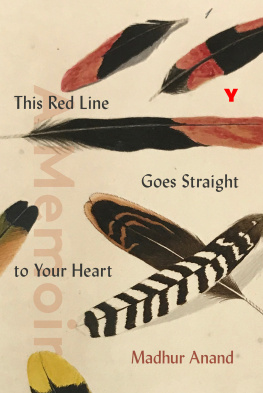
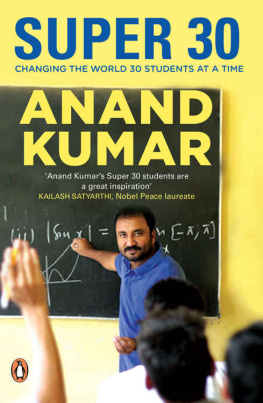
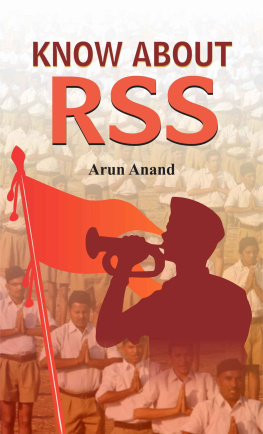
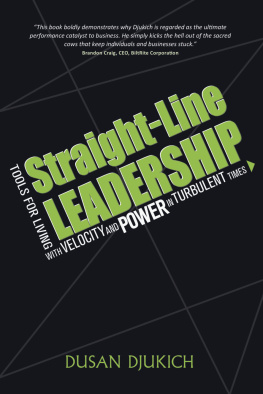
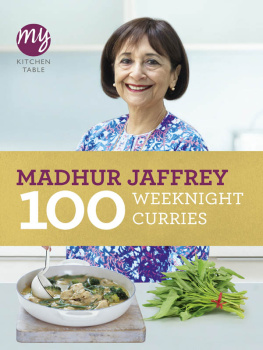
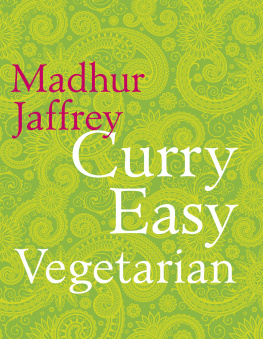
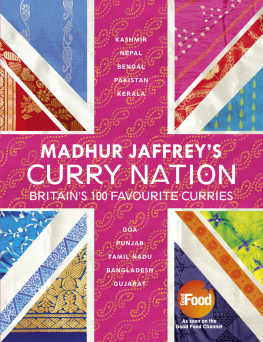
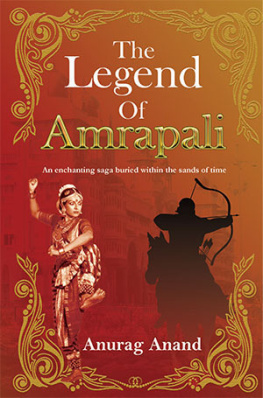
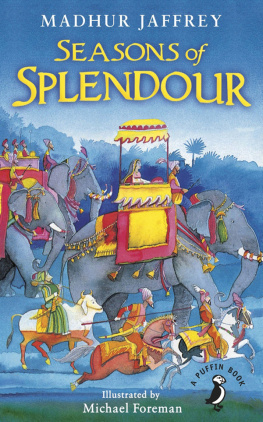

![Anita Anand - The Library Book. Anita Anand ... [Et Al.]](/uploads/posts/book/40194/thumbs/anita-anand-the-library-book-anita-anand-et.jpg)
